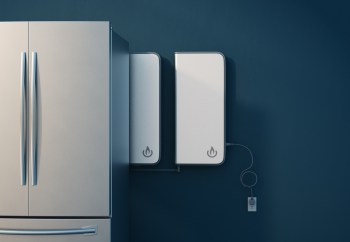A Home Depot employee was not impressed after their store dumped 19 bags of concrete down the trash compactor and wondered if they could've salvaged the situation.
What's happening?
In the r/HomeDepot subreddit, the employee shared a photo of the pile of high-strength concrete before it entered the compactor. Each of the bags weighs 60 pounds and appears to have some level of damage.
"There's got to be a better way to get rid of concrete," the original poster wrote.
Another Home Depot employee said their store sells damaged concrete at 50% off, but the OP responded that their location needed the bags gone ASAP — presumably for aesthetic purposes — because corporate would be doing a walk-through.
Other Redditors suggested the store should have at least tried to give it away.
Why is this important?
Shoving damaged concrete into the compactor might seem like a quick and easy solution, but this practice could cost Home Depot significant money in the long term.
Watch now: How bad is a gas stove for your home's indoor air quality?
"I had to chisel out dried concrete from a compactor for 4 hours and I had to rebuild the hydraulic pump," the OP said, adding, "It's gonna destroy the compactor."
"Huge problem," another affirmed.
Beyond the business impact, the concrete took a lot of energy to make, raising the question of whether something could've been done to prevent that investment from being lost.
|
Do you worry about how much food you throw away? Click your choice to see results and speak your mind. |
As a study in PNAS explains, the production of cement (the primary ingredient in concrete) is "the largest single industrial emitter" of carbon dioxide.
TCD Picks » Upway Spotlight

This heat-trapping gas significantly contributes to warming global temperatures — the effects of which include food insecurity and an increased risk of disease.
Is Home Depot doing anything about this?
On its website, Home Depot details how it is working toward a more sustainable future, highlighting initiatives aimed at reducing plastic waste and water use, adopting renewable energy, and eliminating toxic chemicals from its products.
Home Depot has also partnered with EnergyStar, an energy-efficiency program from the Environmental Protection Agency. According to its 2024 Environmental, Social and Governance, these efforts have connected customers with home upgrades that have saved them more than $500 billion in energy costs.
Moreover, the company has invested in an optimized supply chain. Actions include reducing the number of shipments (and their associated pollution) by stacking products on trucks. The Cool Down couldn't find any specific policies surrounding concrete management or disposal.
What can be done about pollution from home projects more broadly?
Whether you're taking care of your yard or making home upgrades, you can participate in mindful resource management. Doing so comes with monetary and environmental perks, too.
For instance, if you want a piece of lawn equipment that's quieter and doesn't need expensive gas — meaning it doesn't spew toxic pollution — an electric lawn mower is the way to go. If you want to spend less money on water bills, rewilding your yard with native plants can help. You'll also be providing a haven for food supply-supporting pollinators like butterflies and bees.
Join our free newsletter for good news and useful tips, and don't miss this cool list of easy ways to help yourself while helping the planet.


















